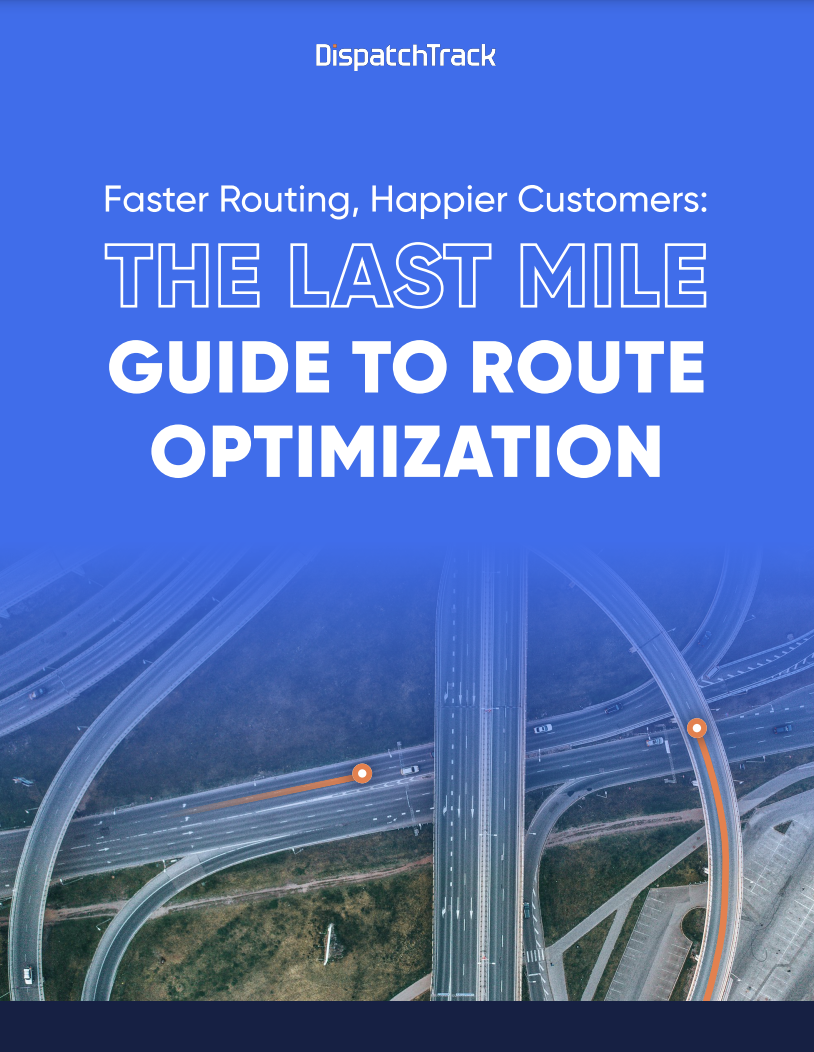WHITE PAPER
Faster Routing, Happier Customers: The Last Mile Guide to Route Optimization
When it comes to last mile deliveries, routes are at the bedrock of everything you do. The efficiency of your routes determines how quickly you’ll be able to turn around orders, how many orders you can deliver per day, and whether you’re able to get the right goods to the right customers at the right time.
It’s no secret that driver pay and fuel costs are some of the most expensive parts of the entire fulfillment process, accounting for a huge percentage of the entire process. Which means that the ability to get more deliveries out of the same number of miles and driver hours can have huge time- and cost-saving implications.
That’s where route optimization comes in. By finding the most efficient sequence of stops and routes from one stop to the next, route optimization can reduce the number of miles driven per stop. This can significantly reduce driver and fuel costs—often by more than 10%.
But increasing efficiency and reducing miles driven aren’t the only ways that effective route optimization can impact your last mile logistics. In fact, this process can have an important strategic impact on your operations. The best route optimization tools leverage AI to enable you to ensure not just shorter routes but highly accurate ETAs, which can have a huge positive impact on customer experience. At the same time, route optimization capabilities can enable you to run what-if scenarios on potential routing options in order to predict costs and customer service implications.
In this post, we’ll go over the ins and outs of route optimization—including some real-life examples of how businesses have used smarter routing to improve their operations. We’l discuss the benefits of the right routing technology, as well as what to look for when choosing route optimization software for your business.
If there’s anything that piques your interest or that you want to learn more about, we’re always happy to talk through the finer points of route optimization with anyone who’s interested. Just set up some time to speak with us here.
What Is Route Optimization?
At a high level, route optimization is quite simple. You just need to find an efficient sequence for stops for a given number of orders, such that you complete all the deliveries within the allotted time without driving more miles than necessary.
It gets more complex than this pretty quickly. For starters, there’s the fact that the “simple” task we described above isn’t really that simple from a mathematical perspective. Each new stop increases the possible number of combinations exponentially, so that after only a few stops you quickly have a number of potential routes that’s too large to compare by hand.
When you add in things like differences in driver speed and skill, customer time window requests, differences in vehicle capacity, and other parameters, finding the most efficient route becomes daunting pretty quickly. The result is that planners are almost never going to be in a position where they can find the right routes by hand on a consistent basis. Sure, sometimes you can eyeball it—but as soon as you add a wrinkle like a street closure or a request for a complex installation, it can all begin to fall apart.
That’s why route optimization software has been a key part of the delivery technology stack for many years now. It’s a necessary building block for smarter deliveries.
The right route optimization can make a huge difference in cutting through the complexities we talked about above and streamlining the process of planning efficient routes.
Here a few key benefits:
Driving fewer miles: When you find the shortest distance between stops and the efficient sequence of those stops, you can drive fewer miles per stop. The result is that you save money on fuel and driver hours.
Better capacity utilization: By minimizing drive time between stops, your routing platform should enable you to complete more stops per route per day. This means that you get more out of your capacity, and you can handle more deliveries before having to contract to a 3rd party or purchase more assets.
Faster delivery turnarounds: This is somewhat dependent on having software that generates routes relatively quickly—but when you can use your capacity to its fullest, you can shrink the lead time for orders, delighting customers in the process.
Improved strategic planning: If your software supports it, you can use the same route optimization techniques to run what-if scenarios for potential changes in your network. This helps you make informed decisions about potential geographic expansions, placement of hubs and warehouses, etc.
Reduced planning time: A route optimization tool with the processing power to route thousands of stops in seconds can significantly cut down on the time it takes routers and dispatchers to come up with delivery routes for a given day or week. By the same token, a routing interface that’s easy to use speeds up the process even further and enables you to run reroutes more frequently.
Better on-time performance: Without the right tools, coming up with accurate delivery ETAs across an entire route is nearly impossible. But when you can leverage technology like AI and machine learning to improve the accuracy of your time estimates, you can keep customers happy with consistent on-time deliveries.
